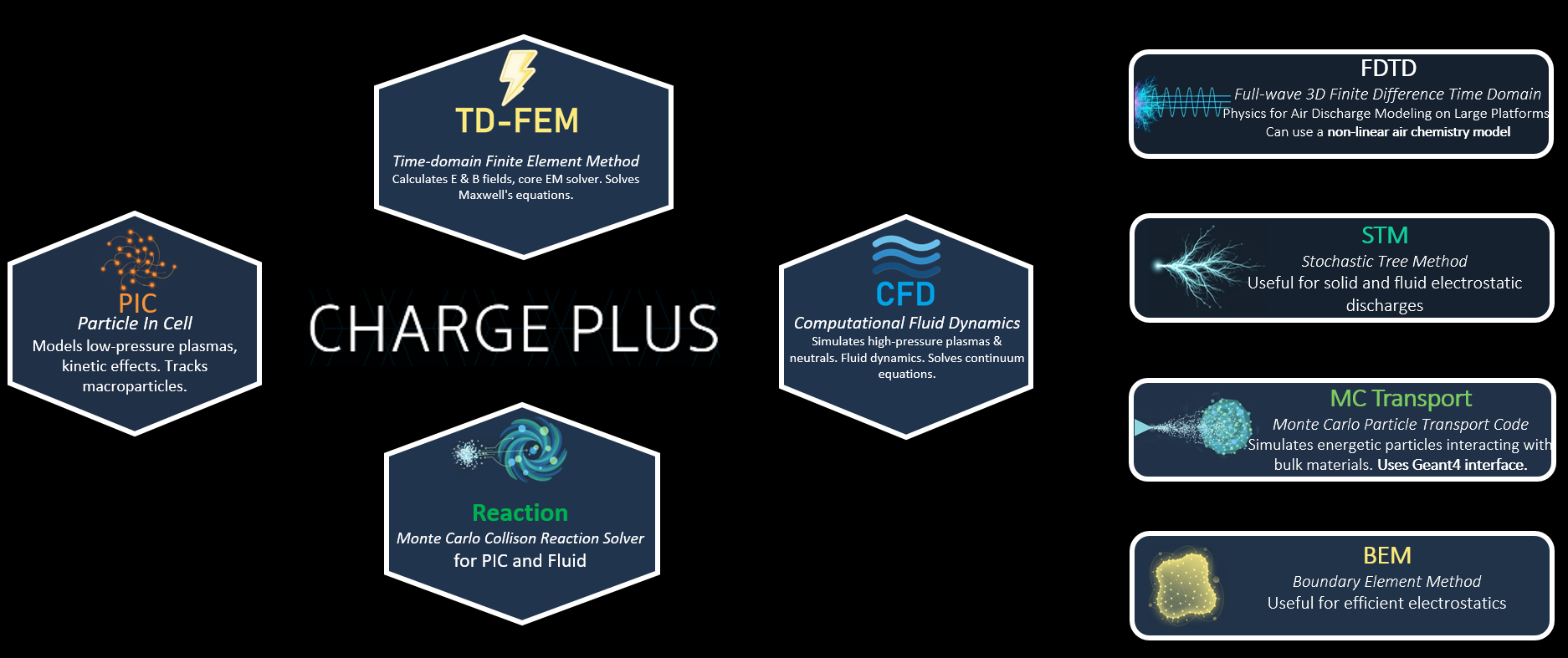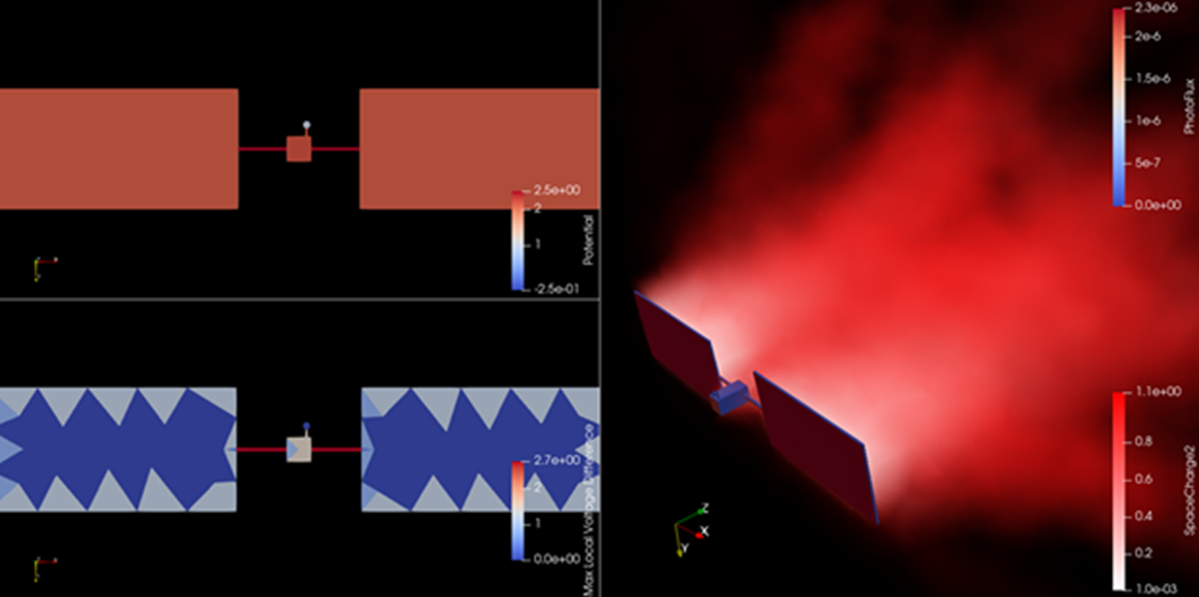Simulating plasma and electromagnetic discharge is one of the most complex challenges in modern engineering. Whether you are designing semiconductor chambers or hardening satellites for orbit, the physics involved are rarely isolated—they are intrinsically coupled.
This blog will provide a conceptual overview of Ansys Charge Plus. We will look beyond the menus to understand how this tool models the complex interaction between electromagnetic fields and charged particles to solve multiphysics problems in a single environment.
Electron Gun Simulation
The Multiphysics Challenge
The core difficulty in modeling charging and discharging phenomena is that you cannot solve the physics in isolation. You cannot look at fluid dynamics without considering the electromagnetic fields, nor can you look at particle transport without considering surface effects.
Ansys Charge Plus addresses this by integrating all necessary physics into a unified environment. This allows engineers to solve coupled problems involving Electromagnetic Fields, Plasma and Fluid Dynamics (including ion dynamics in CFD), and Particle Transport. By doing so, we get a complete picture of the environment—from how ions move within a fluid continuum to how individual electrons interact with surface dielectrics.
Under the Hood: A Hybrid Solver Approach
To handle such a diverse range of environments, Charge Plus acts as a hybrid engine. It doesn't rely on a single mathematical method; instead, it combines several distinct solvers into one workflow.

The engine functions through three primary layers:
- Electromagnetics: It utilizes a Time-Domain Finite Element Method (TD-FEM) to calculate the electric and magnetic fields (E & B fields) that drive the entire system.
- Plasma Regimes: The solver chosen depends on the pressure. For low-pressure environments where kinetic effects are dominant, we use Particle-In-Cell (PIC) to track macroparticles. For high-pressure environments behaving like a continuum, we utilize Computational Fluid Dynamics (CFD).
- Chemistry: Underpinning both of these is a Monte Carlo Collision Reaction Solver, which handles the complex chemical reactions occurring within the plasma.
Industrial Applications: Semiconductor Manufacturing
In the context of semiconductor manufacturing, these coupled solvers are critical for process control. Charge Plus can simulate processes like PECVD (Plasma-Enhanced Chemical Vapor Deposition), sputtering, and etching.
Electron Density & Temperature in Low Pressure 3D Argon Plasma Chamber
By understanding the electron temperature and ion density distributions within a chamber, engineers can predict uniformity and etching rates before a physical prototype is ever built. This requires simultaneously solving for the electromagnetic heating of the gas and the resulting fluid flow of the plasma.
Space and Defense: Orbit and Radiation
Moving from the fabrication plant to orbit, the risk shifts to spacecraft charging. This is a problem of environmental coupling. It isn't enough to know the geometry of a satellite; you must know its location in space.
Surface charging and Plasma Wake Simulation
Charge Plus integrates with Ansys STK to import specific orbital trajectories. This allows us to predict the exact plasma environment a vehicle encounters, analyzing both Surface Charging (which affects sensors and solar arrays) and Internal Charging (which can lead to dielectric breakdown inside electronics).
Ionizing Dose Simulation using Ray Tracing Method
For deep space missions, the software also handles Radiation Hardening. Using Monte Carlo Particle Transport or GPU-accelerated Ray Tracing, engineers can assess the "Total Ionizing Dose" to ensure shielding is sufficient to protect sensitive components over the mission lifespan.
Predicting Discharge: From Probability to Physics
Eventually, built-up charge will discharge. Charge Plus offers two distinct ways to model this:
1. The Stochastic Tree Method (STM)
Flashover simulation using STM
Modeling the exact path of an arc can be computationally heavy. For faster analysis, we use the Stochastic Tree Method. This relies on probability to predict the branching behavior of air breakdown and surface flashover. It helps identify where an arc is statistically most likely to occur without running a long of transient simulation.
2. Full Multiphysics Approach
When you need to understand the physics of the arc itself—such as temperature rise or plasma density—we use the Full Multiphysics approach14. This couples the EM, Fluid, and PIC solvers to simulate the flashover lifecycle, providing granular data on conductivity and electric field saturation15.
Watch the Full Overview
Ready to see these solvers in action? While this post outlines the theory, seeing the physics in motion brings the simulation to life. Check out the full video below to experience the detailed animations of plasma dynamics, stochastic discharge, and particle transport. It provides the visual context you will need before we dive into the hands-on tutorials in the upcoming episodes of this series.
Nov 21, 2025 5:50:19 PM
